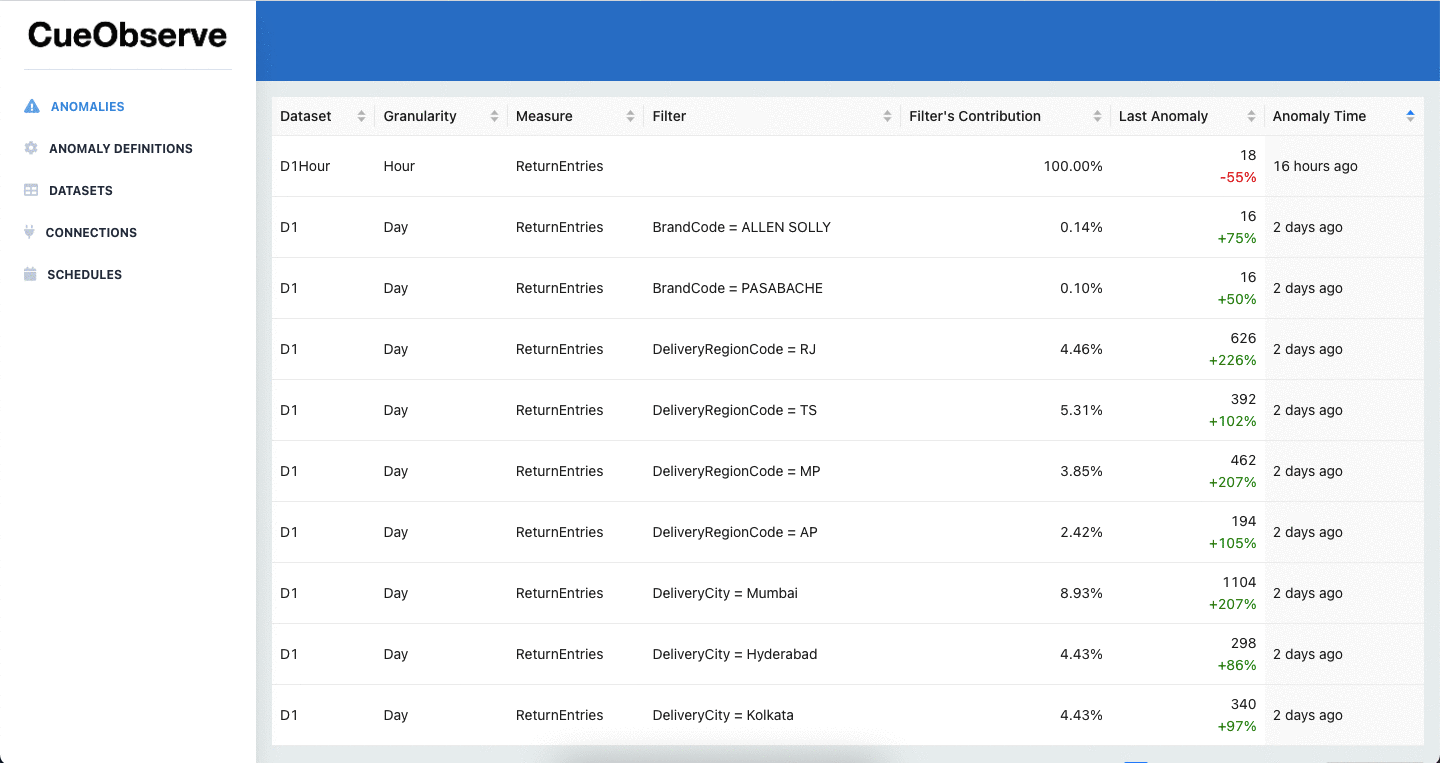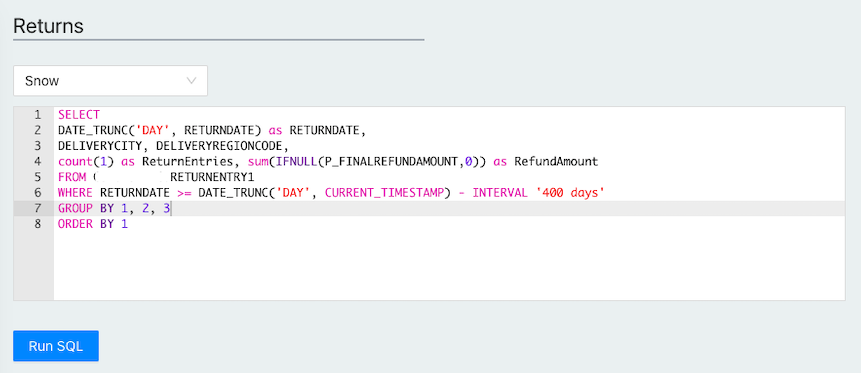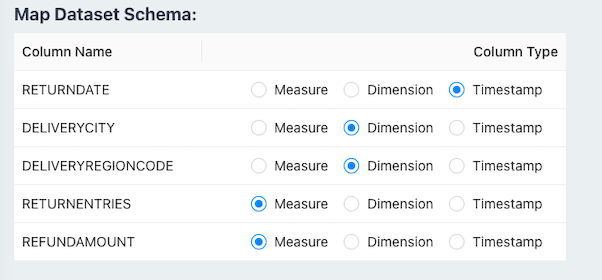With CueObserve, you can run anomaly detection on data in your SQL data warehouses and databases.
Install via Docker
docker run -p 3000:80 cuebook/cueobserve
Now visit http://localhost:3000 in your browser.
You write a SQL GROUP BY query, map its columns as dimensions and measures, and save it as a virtual Dataset.
You then define one or more anomaly detection jobs on the dataset.
When an anomaly detection job runs, CueObserve does the following:
- Executes the SQL GROUP BY query on your datawarehouse and stores the result as a Pandas dataframe.
- Generates one or more timeseries from the dataframe, as defined in your anomaly detection job.
- Generates a forecast for each timeseries using Prophet.
- Creates a visual card for each timeseries. Marks the card as an anomaly if the last data point is anomalous.
- Automated SQL to timeseries transformation.
- Run anomaly detection on the aggregate metric or break it down by any dimension.
- In-built Scheduler. CueObserve uses Celery as the executor and celery-beat as the scheduler.
- Slack alerts when anomalies are detected. (coming soon)
- Monitoring. Slack alert when a job fails. CueObserve maintains detailed logs. (coming soon)
- Currently supports Prophet for timeseries forecasting.
- Not being built for real-time anomaly detection on streaming data.
For general help using CueObserve, read the documentation, or go to Github Discussions.
To report a bug or request a feature, open an issue.
We'd love contributions to CueObserve. Before you contribute, please first discuss the change you wish to make via an issue or a discussion. Contributors are expected to adhere to our code of conduct.




